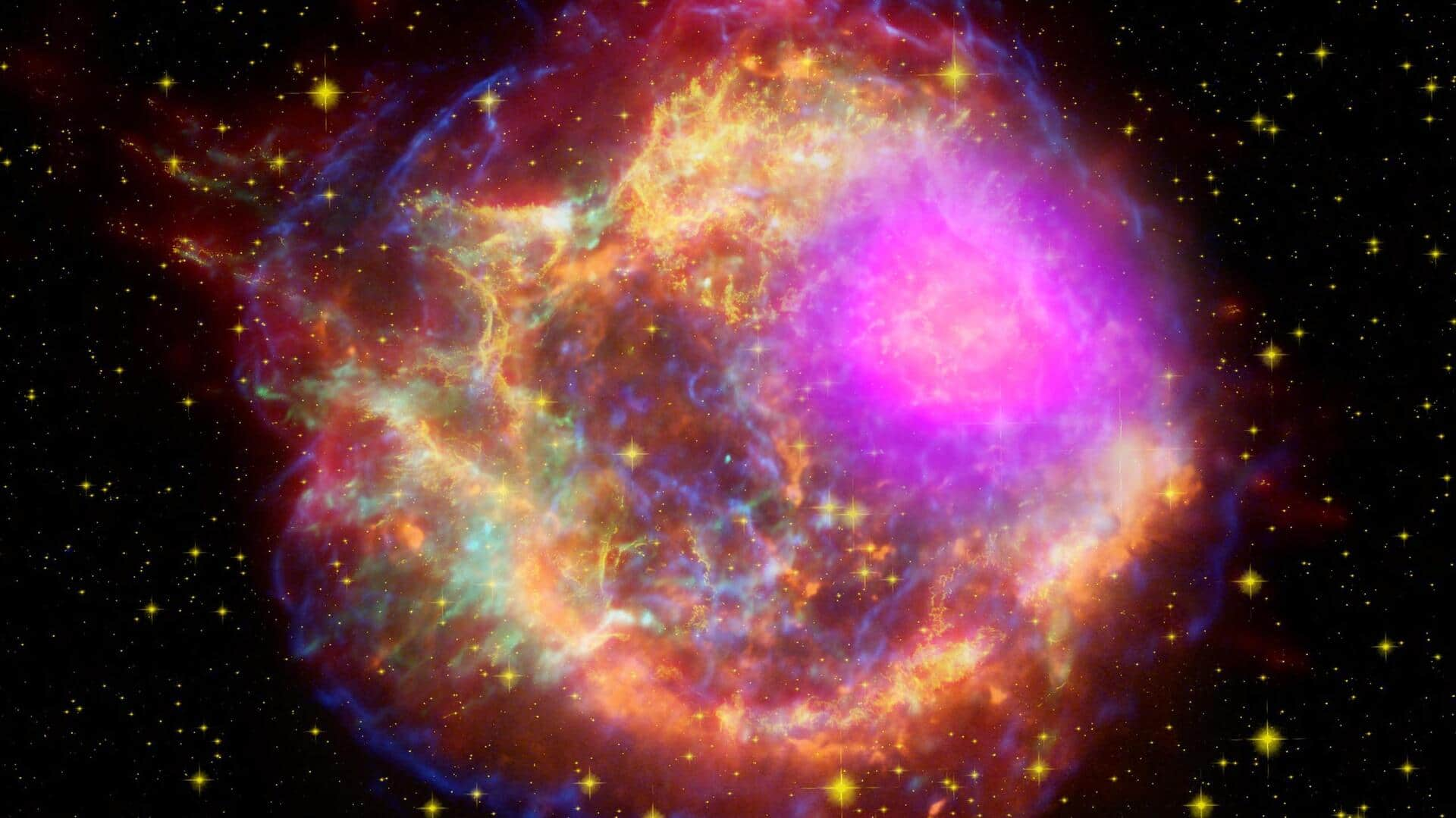
Watching a supernova within hours of explosion now possible
What's the story
A team of astronomers from the Institute of Space Sciences (ICE-CSIC) in Barcelona has developed a new method to obtain the earliest possible spectra of supernovae, ideally within 24-48 hours after their "first light." The study, led by Lluis Galbany, was published in the Journal of Cosmology and Astroparticle Physics.
Stellar evolution
What are thermonuclear and core-collapse supernovae?
Supernovae are massive explosions marking the end of a star's life cycle. They are classified into two main types based on the mass of the progenitor star. Thermonuclear supernovae involve stars with an initial mass of up to eight solar masses, while core-collapse supernovae involve more massive stars that go through nuclear fusion in their cores, until they can no longer produce energy through fusion.
Observation significance
Why is early observation important?
The first few hours and days after a supernova explosion hold vital clues about the progenitor system. These details help differentiate between different explosion models, estimate key parameters, and study the local environment. Galbany emphasizes that "the sooner we see them, the better." However, obtaining such early data has been challenging as most supernovae were discovered days or weeks after their explosions.
Survey revolution
Changing the game
Modern wide-field, high-cadence surveys are changing the way supernovae are discovered. These surveys cover large areas of the sky and revisit them frequently, allowing for discoveries within hours or days. However, protocols and criteria are still needed to fully exploit these surveys. Galbany's team tested such rules using observations from the Gran Telescopio de Canarias (GTC) and reported on 10 supernovae, half thermonuclear and half core-collapse, most observed within six days of their estimated explosion time.
Detection strategy
How does the detection protocol work?
The detection protocol starts with a quick search for candidates based on two criteria: the light signal must have been absent in the previous night's pictures and the new source must lie within a galaxy. If both conditions are met, the team triggers OSIRIS on GTC to obtain a spectrum. This helps determine if the star contained hydrogen, indicating whether it's a core-collapse supernova.
Program potential
Future possibilities
The success of this pilot study in gathering data within 48 hours suggests that even faster observations are possible. Galbany says, "What we have just published is a pilot study." He adds that "a rapid-response spectroscopic program, well coordinated with deep photometric surveys, can realistically collect spectra within a day of the explosion." This opens up possibilities for systematic studies of early phases in future large surveys like La Silla Southern Supernova Survey and Legacy Survey of Space and Time.